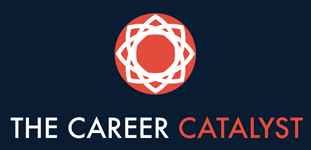
This may seem like a strange time to rebuild your resume, but it’s actually the perfect chance to think through what you’ve accomplished so you can redefine what you want once we can all safely go back to work.
Start by digging up whatever you have for a resume, even if it’s old. Dust that sucker off and have a look at it. Does it reflect your most recent work experience well? What’s missing? Does it look good, or is the style dated or ugly?
Next, set the resume aside and grab either a blank document screen or a sheet of paper. Think about what your regular work tasks are and jot those down. Start a second column or place on your paper for your accomplishments. Note the things you’ve done that you’re really proud of, the things you’ve been given praise for, anything you’ve created or changed. Leave extra space because you’ll think of more of these as you go along.
Then, go back through your lists and cross off anything you hated doing. You don’t have to obliterate it or anything, just draw a line through it. If you hated it, you presumably don’t want to keep doing it, after all! Then, using a highlighter or a colored pen, mark the things you’ve really enjoyed doing. Be as creative as you want. Nobody has to see this (unless you create w beautiful piece of art you want to show off) so have some fun. You can differentiate the things you really, really enjoyed doing, and the things that were just pleasant. Spend some time doing this so when you stop for the day, you feel like you’ve got a good list.
Now, put that list aside and go do something totally different. Go for a nice be-masked walk. Stretch and touch your toes. Have a Zoom happy hour with some friends. The next day (or whenever it makes sense), pick both your resume and your list and give them a quick side-by-side comparison. How much time have you spent doing tasks you don’t enjoy? Go ahead and cross those off your resume, and instead add the things you have enjoyed. Some sections on the document will get a lot bigger, and some will shrink alarmingly, but don’t worry. We’re creating a whole new you, focused on your zone of genius instead of your job description. Whenever possible, add some outcomes so your future audience will know how awesome you are. At this stage, don’t worry about the length of the document. It’s a work in progress, so you might wind up with several pages.
Once you’ve really written down what you love doing and are good at, set the document aside again and get some distance from it. If you know what it is you want to do next, spend some time searching for job postings for that title, even if they’re outside your state. Read through the descriptions, paying attention to the things you don’t have listed on your resume. You may even want to start another list, detailing those items so you can think of how your experience comes close to reflecting those things, and ways you might fill in any gaps through things like courses at your Workforce Center, LinkedIn Learning (you can sign up for a free month through the Premium site—just be sure to cancel before the charges kick in), Khan Academy, and other free online class sites.
If you don’t know what you’re looking for next, head on over to LinkedIn and spend some time looking people up. When you see interesting job titles, reach out to the people who have them and ask to connect. Be sure you start a list of questions you have for each of the interesting people you find. My preference, whenever it’s possible, is for you to connect through something like Zoom or Skype so that you can see each other, but if you or your contacts are pressed for time, you can just email your questions. Be sure you add a note if you’re reaching out to people you don’t know on LinkedIn. I can’t speak for everyone, but I usually ignore requests I get if I don’t know why people want to connect with me, assuming it’s a sales pitch or something similar. When people give you a bit of their time, be sure to follow up with a nice thank-you note.
As you do all of this, be sure you’re continuing to update your resume. People will say things that remind you that you did something similar, or you’ll just suddenly remember something. If you’re in the process of deciding what’s next, the rebuilding will take longer because you’ll need to identify what you want, but keep at it. If you get overwhelmed, consider investing in a career counselor to help you gain some clarity.
Once you have your built-out document that speaks to a particular kind of job, start fine-tuning the resume. Tighten up your spacing, delete anything that doesn’t make your case (you can add it to your LinkedIn profile so it’s still a visible part of your work history), and try to pare down any redundancy so your final resume is a nice 2-page deal. Photos, hobbies, interests, and your references don’t belong on the resume, so that will save you some space. And that’s it! You’ve created your beautiful new resume that will take you in the direction you want to go next, quarantine be damned. You’ve really earned that virtual happy hour now.



